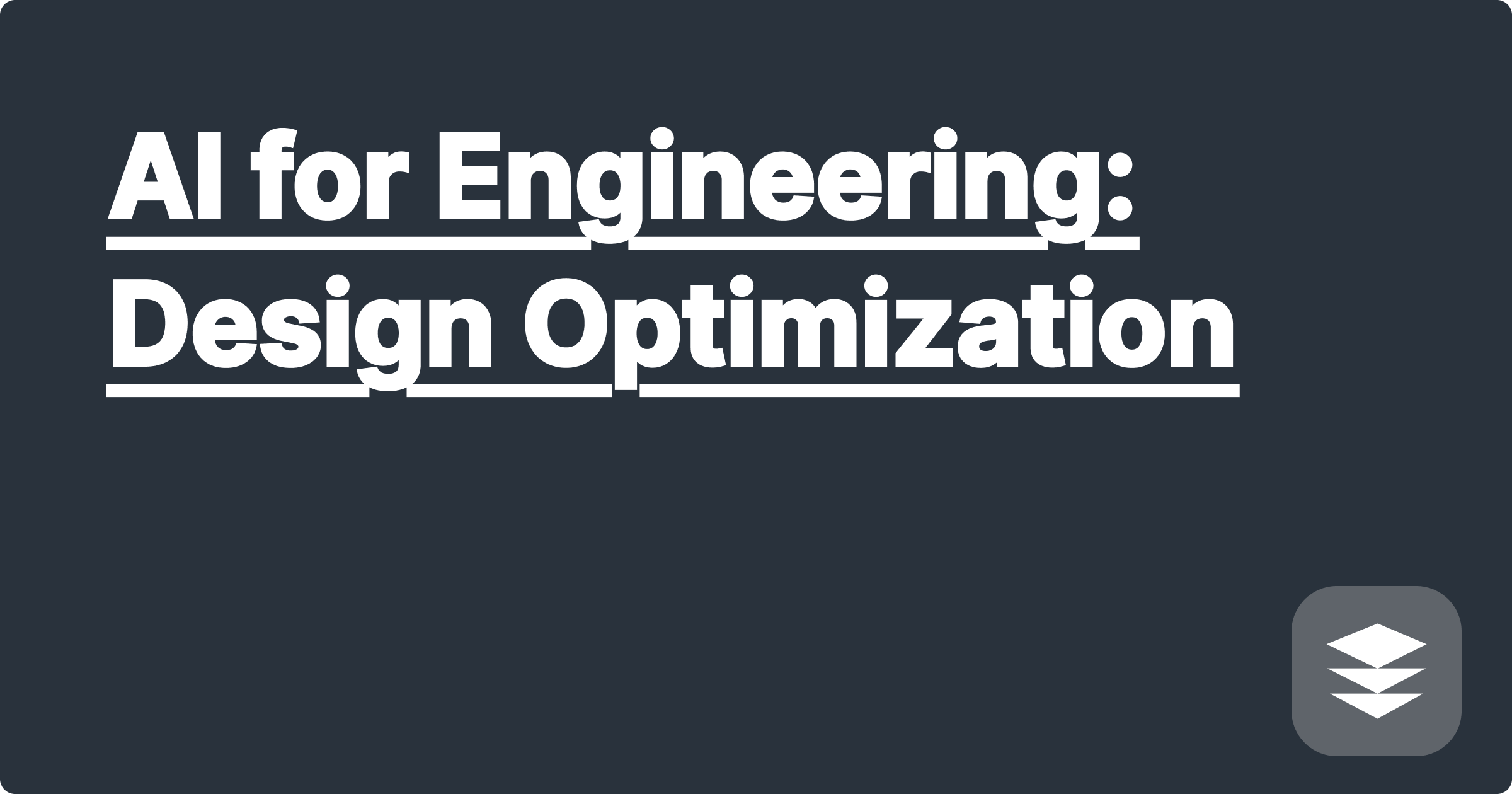
The ever-increasing complexity of engineering design challenges demands innovative solutions. From optimizing the aerodynamics of a new aircraft to designing sustainable energy systems, engineers face the daunting task of balancing performance, cost, and sustainability. Traditional design methods often rely on iterative processes, which can be time-consuming and resource-intensive. However, the advent of artificial intelligence (AI) is revolutionizing the engineering landscape, offering powerful tools for design optimization and accelerating the path to groundbreaking innovations. AI is no longer a futuristic concept; it's a practical toolkit for today's STEM students and researchers, empowering them to tackle complex design problems with unprecedented speed and efficiency.
For STEM students and researchers, mastering AI-driven design optimization is no longer a luxury but a necessity. The ability to leverage AI tools can significantly impact research productivity, enabling faster data analysis, efficient design exploration, and ultimately, more impactful discoveries. Imagine being able to analyze massive datasets in minutes, generate thousands of design variations in hours, and visualize complex systems with interactive 3D models. This is the power of AI in engineering design, and this blog post will guide you through the practical strategies and tools to unlock its full potential. Specifically, we'll focus on how AI can revolutionize your approach to data analysis and visualization, turning complex data into actionable insights and transforming tedious tasks into automated workflows.
Engineering design is inherently complex, involving multiple interacting variables and constraints. Consider the design of a wind turbine blade. Engineers must optimize its shape to maximize energy capture while minimizing noise and material costs. This requires navigating a complex landscape of aerodynamic principles, structural mechanics, and material science. Traditional design methods often involve iterative simulations and experiments, which can be computationally expensive and time-consuming. Furthermore, the sheer volume of data generated during these processes can be overwhelming, making it challenging to extract meaningful insights and make informed design decisions. This complexity is further compounded by the increasing demand for sustainable and resilient designs, pushing engineers to explore unconventional materials and innovative design paradigms.
AI offers a transformative approach to engineering design optimization. AI algorithms can analyze vast datasets, identify patterns, and predict performance with remarkable accuracy. For instance, machine learning algorithms can be trained on historical wind turbine data to predict the energy output of new blade designs, significantly reducing the need for costly and time-consuming simulations. Furthermore, AI-powered generative design tools can automatically generate thousands of design variations, exploring the design space far more efficiently than traditional methods. Tools like ChatGPT and Claude can be invaluable for brainstorming, literature reviews, and even generating code snippets for specific design tasks. Wolfram Alpha can be used for complex calculations, symbolic manipulations, and accessing a vast library of scientific data. These tools, when used strategically, can dramatically accelerate the design process and unlock innovative solutions.
Integrating AI into your engineering design workflow doesn't require advanced programming skills. Start by clearly defining your design objectives and constraints. Then, gather relevant data from experiments, simulations, or existing databases. This data will be used to train your AI model. Several user-friendly AI platforms offer pre-trained models and intuitive interfaces for building custom models. Once your model is trained, you can use it to predict the performance of new designs, explore the design space, and identify optimal solutions. For example, you can use a generative design tool like Autodesk Dreamcatcher to generate a wide range of wind turbine blade designs based on your specified constraints. The tool will then use AI algorithms to evaluate the performance of each design and identify the most promising candidates. Finally, you can refine the selected designs using traditional engineering analysis and validation methods.
One compelling example of AI-driven design optimization is in the aerospace industry. Airbus used generative design and AI to develop a new bionic partition for its A320 aircraft. The AI-designed partition is significantly lighter and stronger than the previous design, resulting in substantial fuel savings and reduced emissions. In the field of civil engineering, AI is being used to optimize the design of bridges and buildings, improving structural performance and reducing material usage. Researchers have also employed AI to design novel materials with enhanced properties, such as increased strength and improved thermal conductivity. For example, AI algorithms have been used to discover new alloys with superior performance characteristics for high-temperature applications.
To effectively leverage AI in your STEM education and research, focus on developing a strong foundation in data analysis and machine learning principles. Explore online courses and tutorials to learn about different AI algorithms and their applications. Experiment with different AI tools and platforms to find the ones that best suit your needs. Don't be afraid to collaborate with other researchers and seek guidance from experts in the field. Remember, AI is a powerful tool, but its effectiveness depends on your ability to formulate clear research questions, gather relevant data, and interpret the results critically. Documenting your AI-driven workflow and sharing your findings with the scientific community can significantly enhance your academic impact.
Start small, perhaps by using AI to automate a specific task in your current research project. Gradually expand your AI toolkit and explore more advanced applications as you gain experience. While there might be initial challenges in learning new software or adapting to new workflows, the long-term benefits of integrating AI into your research are undeniable. Embrace the power of AI to unlock new possibilities, accelerate your research progress, and make a meaningful contribution to your field. By mastering these AI-driven techniques, you'll not only enhance your own research productivity but also contribute to the advancement of STEM fields as a whole.
AI for Chemical Analysis: Faster Results
Ace STEM Exams: AI-Powered Prep Guide
AI Math Tutor: Master Complex Equations
AI in Biology: Data Visualization Made Easy
AI Flashcards: Personalized STEM Learning
AI for Engineering: Design Optimization
AI Data Analysis: Unlocking Research Insights
AI-Powered Note Taking: Organize Smartly